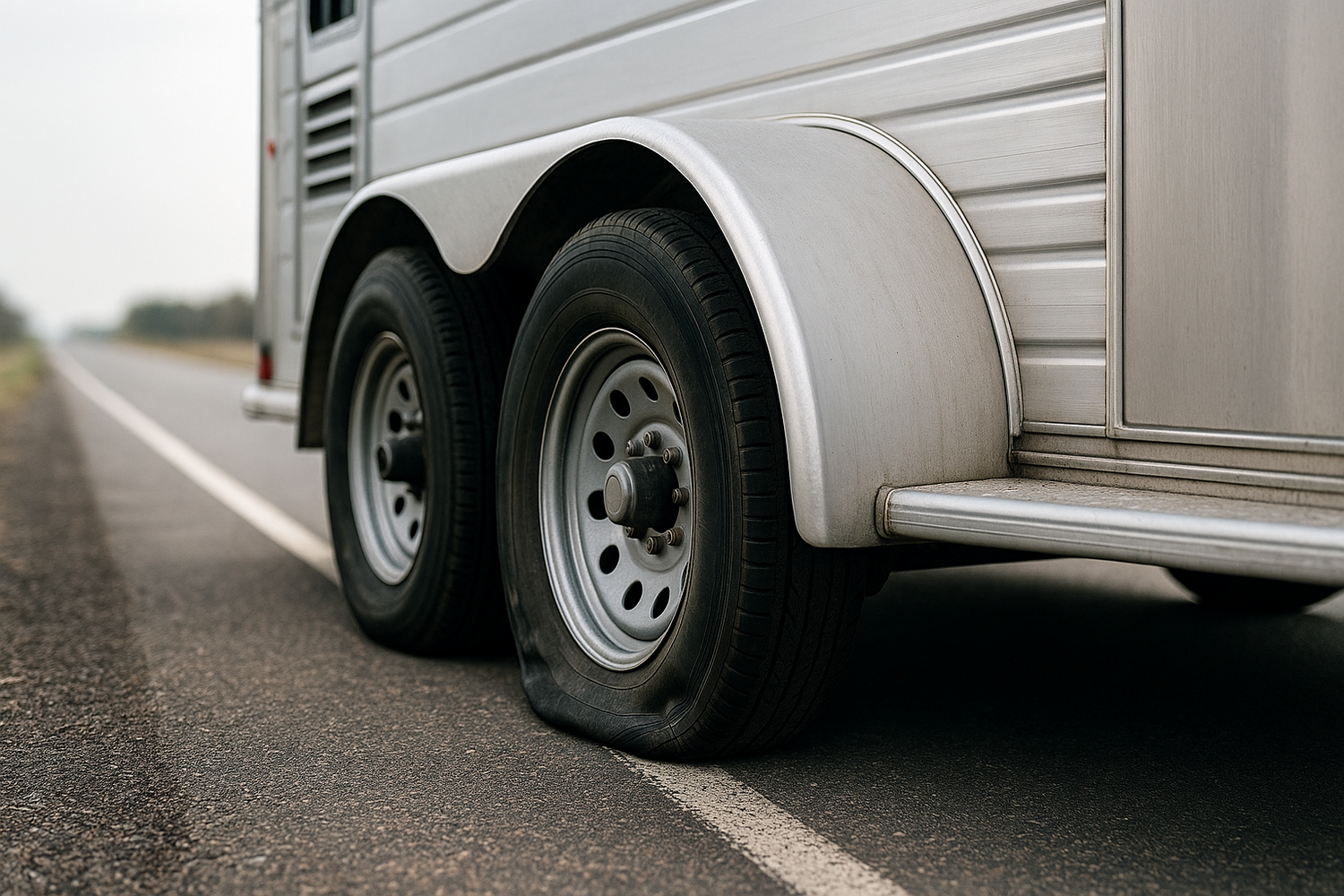Understanding the importance of trailer wheel bearings is crucial for any trailer owner. These components are essential for ensuring the smooth operation of your trailer's wheels, directly impacting both performance and safety on the road. Wheel bearings facilitate the rotation of the wheels by reducing friction, which helps in maintaining a safe connection between the trailer and the towing vehicle.
Failure to understand and maintain trailer wheel bearings can lead to a myriad of issues, including:
- Increased Wear and Tear: Bearings that are not properly lubricated or are damaged can lead to premature wear, resulting in costly repairs.
- Overheating: Insufficient lubrication can cause bearings to overheat, potentially leading to catastrophic failures while on the road.
- Safety Hazards: A malfunctioning wheel bearing can result in loss of control of your trailer, posing serious risks to the driver and other road users.
By incorporating a monitoring system like TrailerWatchdog, you can gain real-time insights into the condition of your wheel bearings, ensuring that you are alerted to any potential issues before they escalate. Tow with peace of mind, knowing that TrailerWatchdog is standing guard.
Essential Tools for Trailer Wheel Bearing Setup

Setting up your trailer wheel bearings effectively requires the right tools to ensure precision and efficiency. Having a well-equipped toolkit can make the process smoother and help avoid common pitfalls. Here are some essential tools you should consider for your trailer wheel bearing setup:
- Socket Set: A comprehensive socket set will allow you to easily remove and install the wheel hub assembly. Make sure to have both standard and metric sizes available.
- Torque Wrench: This tool is vital for applying the correct amount of torque to the wheel bearing nuts. Proper torque ensures that your bearings are secure without being overtightened, which can lead to damage.
- Grease Gun: A high-quality grease gun is necessary for lubricating the bearings. Ensure you use the appropriate grease type recommended for your bearings to enhance their lifespan.
- Bearing Puller: If you need to remove old or seized bearings, a bearing puller is indispensable. This tool helps you extract the bearings without damaging the hub.
- Cleaning Supplies: Keeping your bearings and hubs clean is crucial. Have a supply of degreasers, rags, and brushes on hand to maintain cleanliness during the setup process.
By ensuring you have these tools at your disposal, you'll be better prepared to tackle your trailer wheel bearing setup efficiently and effectively, leading to improved performance and safety on the road.
Step-by-Step Guide to Wheel Bearing Installation
Installing your trailer wheel bearings correctly is critical for the longevity of your trailer and the safety of your travels. Follow this step-by-step guide to ensure a successful installation:
- Prepare Your Workspace: Start by ensuring you have a clean, organized workspace. Gather all necessary tools and materials, including your new bearings, grease, and cleaning supplies.
- Remove the Wheel: Loosen the lug nuts and remove the wheel from the axle. This will give you access to the hub assembly.
- Take Off the Hub Assembly: Remove the cotter pin and unscrew the spindle nut to detach the hub assembly. Carefully slide the hub off the spindle, exposing the old bearings.
- Clean the Components: Use a degreaser and brushes to clean the hub and spindle thoroughly. Remove any old grease and debris to ensure a proper fit for the new bearings.
- Install New Bearings: Apply a generous amount of grease to the new bearings. Place them into the hub, ensuring they are seated correctly. If your setup includes inner and outer bearings, install them in the correct order.
- Reattach the Hub: Carefully slide the hub back onto the spindle and replace the spindle nut. Use a torque wrench to tighten it to the manufacturer’s specifications.
- Secure with Cotter Pin: Insert a new cotter pin through the spindle nut hole to secure it in place. Ensure it is properly bent and secured to prevent any movement.
- Reinstall the Wheel: Place the wheel back onto the hub and hand-tighten the lug nuts. Lower the trailer and then torque the lug nuts to the recommended specifications.
Following these steps will help ensure that your trailer wheel bearing installation is done correctly, promoting safer travels and a longer lifespan for your trailer.
Common Mistakes in Trailer Bearing Setup

Properly setting up your trailer wheel bearings is crucial, yet many DIYers make common mistakes that can lead to performance issues and safety hazards. Being aware of these pitfalls can save you time, money, and potential trouble on the road. Here are some common mistakes to avoid during your trailer bearing setup:
- Inadequate Cleaning: Failing to thoroughly clean the hub and spindle can result in contamination. Old grease, dirt, and debris can interfere with the new bearings, leading to premature wear and failure.
- Using the Wrong Grease: Not all greases are created equal. Using the incorrect type or insufficient amount of grease can lead to insufficient lubrication, which may cause overheating and bearing failure.
- Over-tightening the Spindle Nut: While it’s important to secure the spindle nut, over-tightening can cause excessive friction and heat, leading to bearing damage. Always refer to the manufacturer’s torque specifications.
- Neglecting to Replace Cotter Pins: Reusing old cotter pins can compromise the secure fit of the spindle nut. Always use new cotter pins to ensure everything stays in place.
- Ignoring the Brake Assembly: When working on wheel bearings, it’s easy to overlook the brake assembly. Ensure that you inspect and service the brake components as needed to prevent issues.
- Skipping Regular Maintenance: After installation, some may forget to check the bearings regularly. Schedule routine inspections to catch any signs of wear early and keep your trailer in optimal condition.
Avoiding these common mistakes will enhance the reliability and safety of your trailer on the road. Regular maintenance and careful setup can significantly improve your trailer’s performance.
Maintaining Your Trailer Wheel Bearings Effectively

Proper maintenance of your trailer wheel bearings is essential for ensuring safe and efficient operation. Regular attention not only prolongs the life of the bearings but also enhances your overall towing experience. Here are some key practices to maintain your trailer wheel bearings effectively:
- Routine Inspections: Schedule regular inspections of your trailer bearings, ideally every 12 months or after every 12,000 miles. Look for signs of wear, such as unusual noises, heat, or play in the wheel.
- Greasing: Depending on your trailer usage, you should repack the wheel bearings with grease every 5,000 to 10,000 miles. Use high-quality bearing grease that meets the specifications recommended by the manufacturer.
- Check for Overheating: After towing for a while, check the temperature of the wheel hubs. If they feel excessively hot, it may indicate insufficient lubrication or a problem with the bearings.
- Seal Inspection: Regularly inspect the bearing seals for cracks or wear. Damaged seals can allow contaminants to enter the bearing assembly, leading to premature failure.
- Monitor Tire Pressure: Ensure that your trailer tires are inflated to the recommended pressure. Under-inflated tires can lead to increased friction and stress on the bearings.
- Keep an Eye on Load Distribution: Ensure that the trailer is loaded evenly. Improper weight distribution can place undue stress on one side of the trailer, affecting bearing performance.
Implementing these maintenance practices will help you avoid costly repairs and replacements, ensuring that your trailer remains reliable and safe for all your towing needs.
Signs of Trailer Wheel Bearing Failure

Recognizing the signs of trailer wheel bearing failure early can save you from serious accidents and costly repairs. Here are some key indicators that your trailer wheel bearings may be failing:
- Unusual Noises: If you hear a grinding, humming, or growling noise coming from the wheel area while towing, it may indicate that the bearings are worn out or damaged.
- Excessive Heat: After driving, carefully touch the wheel hub. If it feels significantly hotter than the others, it could be a sign of insufficient lubrication or bearing wear.
- Vibration: A vibrating trailer while in motion can signal that the wheel bearings are not functioning properly. This can lead to unsafe driving conditions and should be addressed immediately.
- Play in the Wheel: If you can wiggle the wheel up and down or side to side, it may mean that the bearings are loose or worn, affecting the stability of your trailer.
- Visible Damage: Inspect the wheel bearings and seals for any visible signs of wear, such as cracks or leaks, which can indicate that they need immediate replacement.
Being aware of these signs can help you take timely action, preventing catastrophic failures on the road. If you notice any of these indicators, it's crucial to have your trailer inspected by a professional.
Tow with peace of mind, knowing that trailerwatchdog is standing guard.








